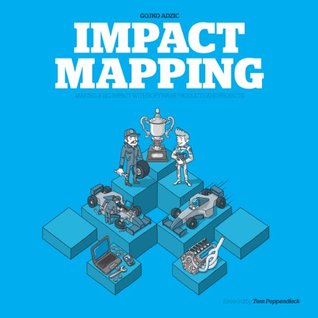More on this book
Community
Kindle Notes & Highlights
by
Gojko Adzic
Read between
October 23 - October 26, 2017
Alistair Cockburn advises looking for three types of actors:
To use impact maps for roadmap management, you need:
agreement that your aim is to achieve a business goal, not deliver pre-set scope frequent, iterative releases to measure progress agreement on metrics that express stakeholder expectations for the central business goal
Creating an impact map
Preparation
Preparation step 1: Discover real goals
The first step in defining a good roadmap is to make sure that we have a clear mission statement that everyone agrees on. The best way to define this mission statement is by expressing the expected business goals.
Preparation step 2: Define good measurements
Preparation step 3: Plan your first milestone
Mapping step 1: Draw the map skeleton
Mapping step 2: Find alternatives
What else could those guys do for us? Who else can help? How? Who can obstruct us?
Mapping step 3: Identify key priorities
business sponsors to prioritise impacts,
Mapping step 4: Earn or learn
Ask: 'Are we sure that the assumption behind our #1 item is correct?' If the answer is 'No', find a way to test the assumption within your learning budget!
Measure progress periodically against key milestone metrics. If the delivery fails to achieve key targets, it's time for a strategy rethink!


